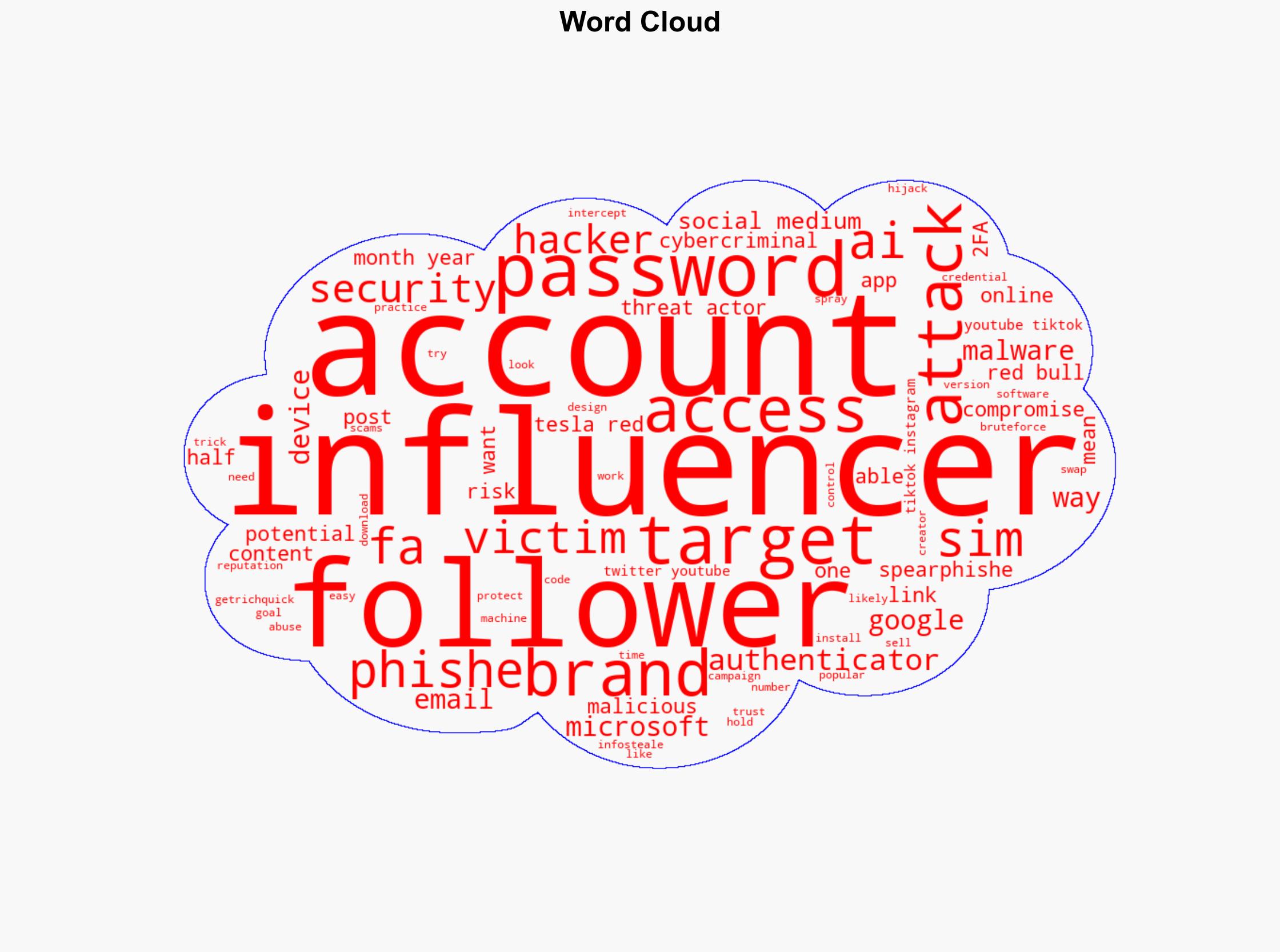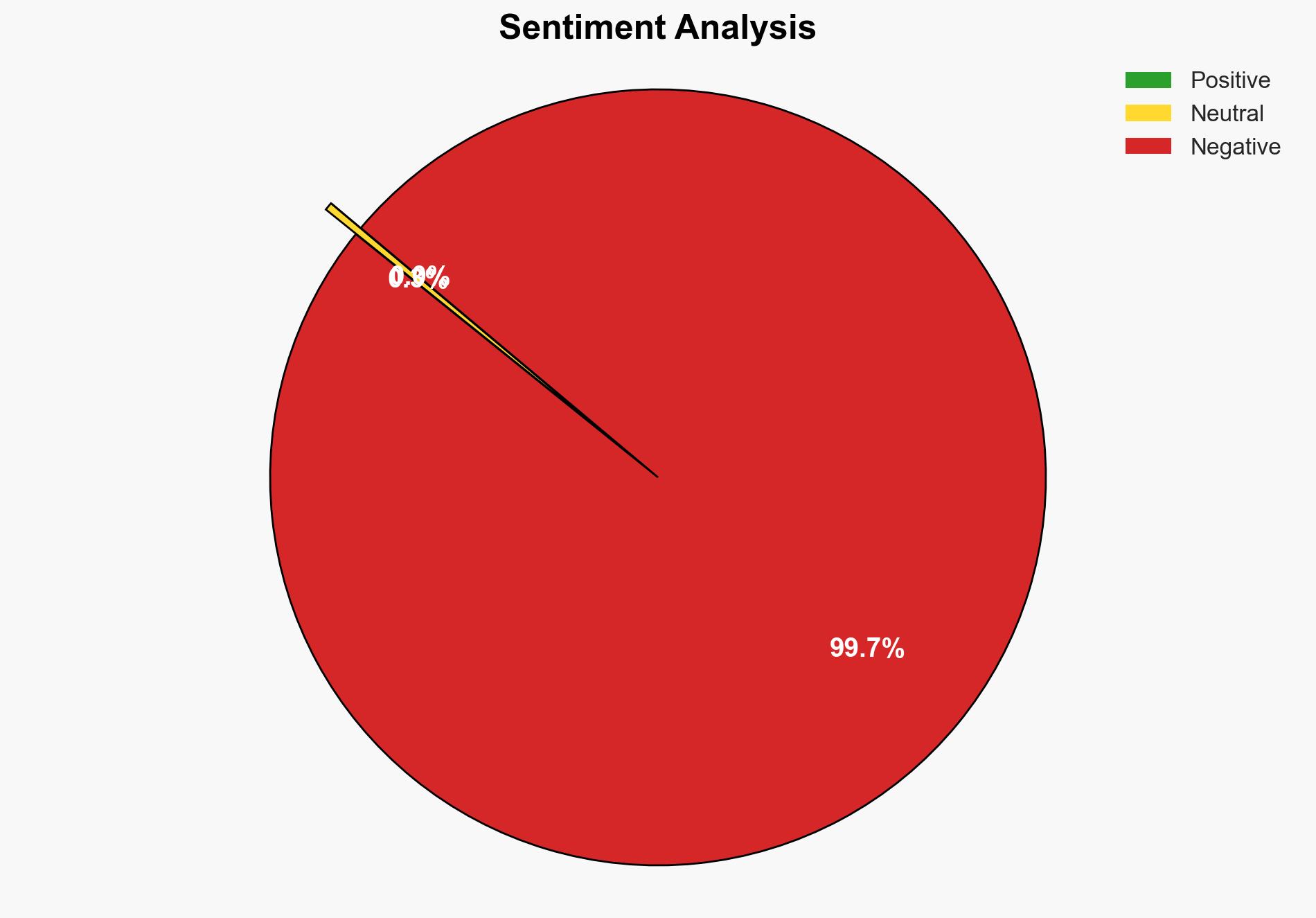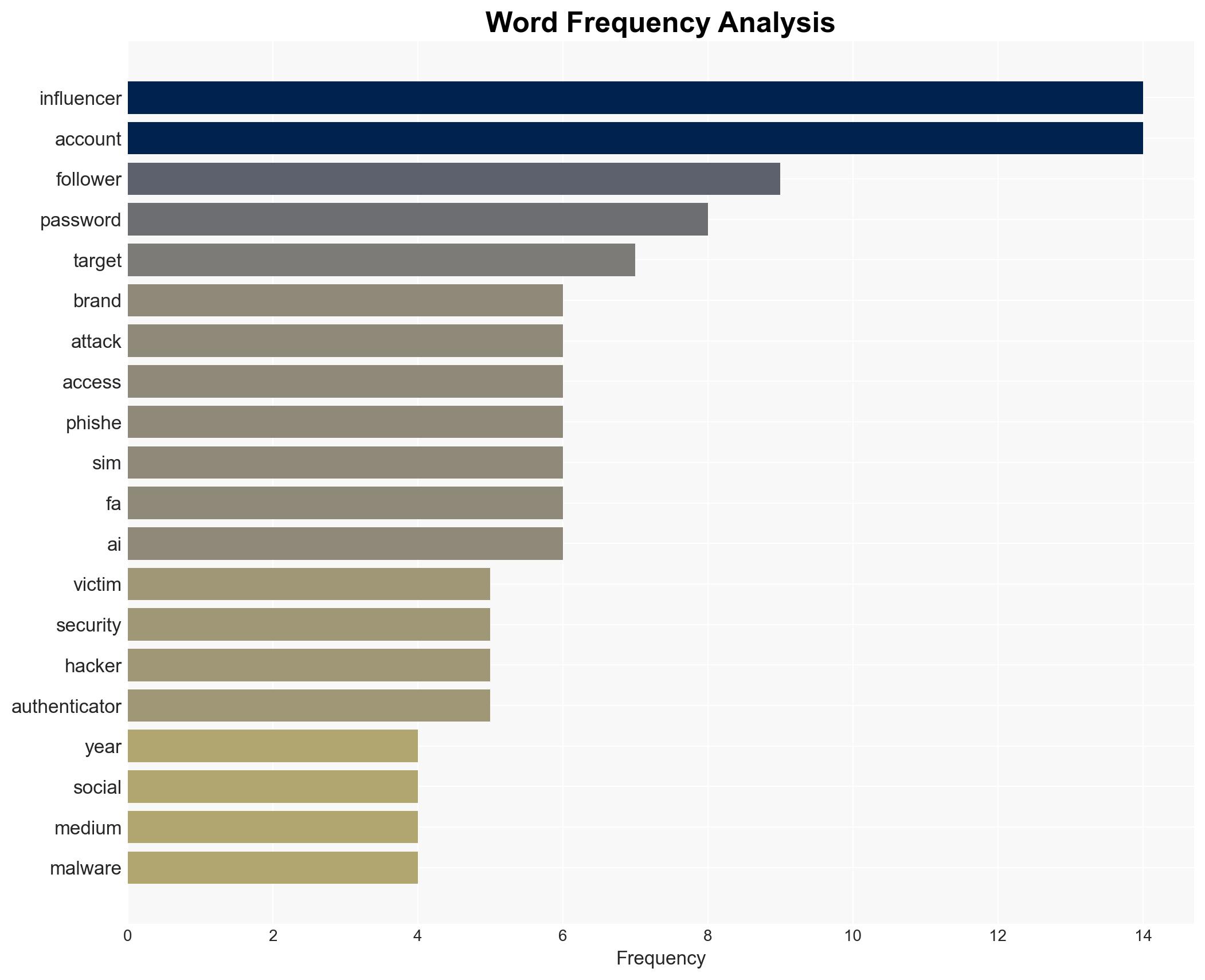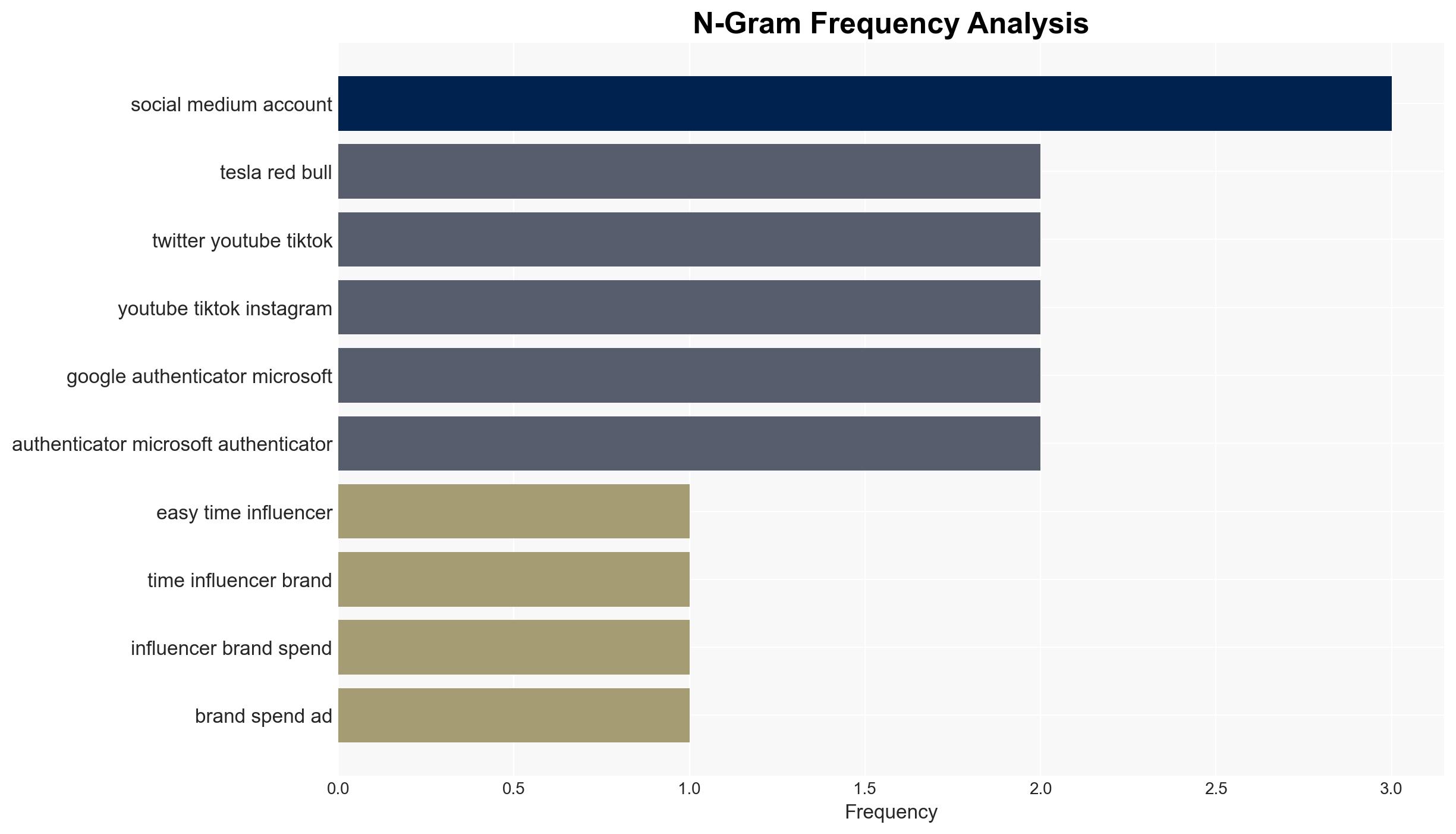Influencers in the crosshairs How cybercriminals are targeting content creators
Published on: 2025-11-25
AI-powered OSINT brief from verified open sources. Automated NLP signal extraction with human verification. See our Methodology and Why WorldWideWatchers.
Intelligence Report:
1. BLUF (Bottom Line Up Front)
With a moderate confidence level, it is assessed that cybercriminals are increasingly targeting social media influencers due to their high-value accounts and potential for financial gain. The most supported hypothesis is that financially motivated cybercriminals are leveraging sophisticated techniques, including AI-enhanced phishing and SIM swapping, to compromise influencer accounts. It is recommended that influencers adopt robust cybersecurity practices, including strong, unique passwords and app-based two-factor authentication (2FA), to mitigate these risks.
2. Competing Hypotheses
Hypothesis 1: Financially motivated cybercriminals are targeting influencers to exploit their accounts for monetary gain through scams and malware distribution.
Hypothesis 2: State-sponsored actors are targeting influencers to use their platforms for disinformation campaigns and influence operations.
Hypothesis 1 is more likely due to the prevalence of financially motivated cybercrime and the specific tactics described, such as phishing and SIM swapping, which align with typical cybercriminal behavior. While state-sponsored actors may also target influencers, the evidence primarily supports financial motives.
3. Key Assumptions and Red Flags
Assumptions: It is assumed that influencers are not adequately protected against sophisticated cyber threats and that their accounts represent lucrative targets for cybercriminals.
Red Flags: The potential for AI-generated phishing emails to appear highly convincing poses a significant challenge in identifying and mitigating these threats.
Deception Indicators: The use of AI to craft flawless phishing emails in local languages suggests a high level of sophistication, which could indicate involvement of advanced persistent threat (APT) groups.
4. Implications and Strategic Risks
The targeting of influencers poses several risks, including reputational damage, financial loss, and the potential for large-scale disinformation campaigns. If cybercriminals successfully compromise influencer accounts, they could exploit these platforms to spread misinformation, conduct scams, and distribute malware, leading to broader societal impacts.
5. Recommendations and Outlook
- Actionable Steps: Influencers should implement strong, unique passwords and app-based 2FA. Regular security audits and awareness training on phishing tactics are also recommended.
- Best Scenario: Influencers adopt robust cybersecurity measures, significantly reducing successful account compromises.
- Worst Scenario: Widespread account compromises lead to significant financial losses and reputational damage, with potential for large-scale disinformation campaigns.
- Most-likely Scenario: Continued targeting of influencers with varying levels of success, leading to incremental improvements in cybersecurity practices among content creators.
6. Key Individuals and Entities
No specific individuals are named in the source text. The report focuses on the general roles of influencers and cybercriminals.
7. Thematic Tags
Structured Analytic Techniques Applied
- Adversarial Threat Simulation: Model and simulate actions of cyber adversaries to anticipate vulnerabilities and improve resilience.
- Indicators Development: Detect and monitor behavioral or technical anomalies across systems for early threat detection.
- Bayesian Scenario Modeling: Quantify uncertainty and predict cyberattack pathways using probabilistic inference.
- Narrative Pattern Analysis: Deconstruct and track propaganda or influence narratives.
Explore more:
Cybersecurity Briefs ·
Daily Summary ·
Support us





